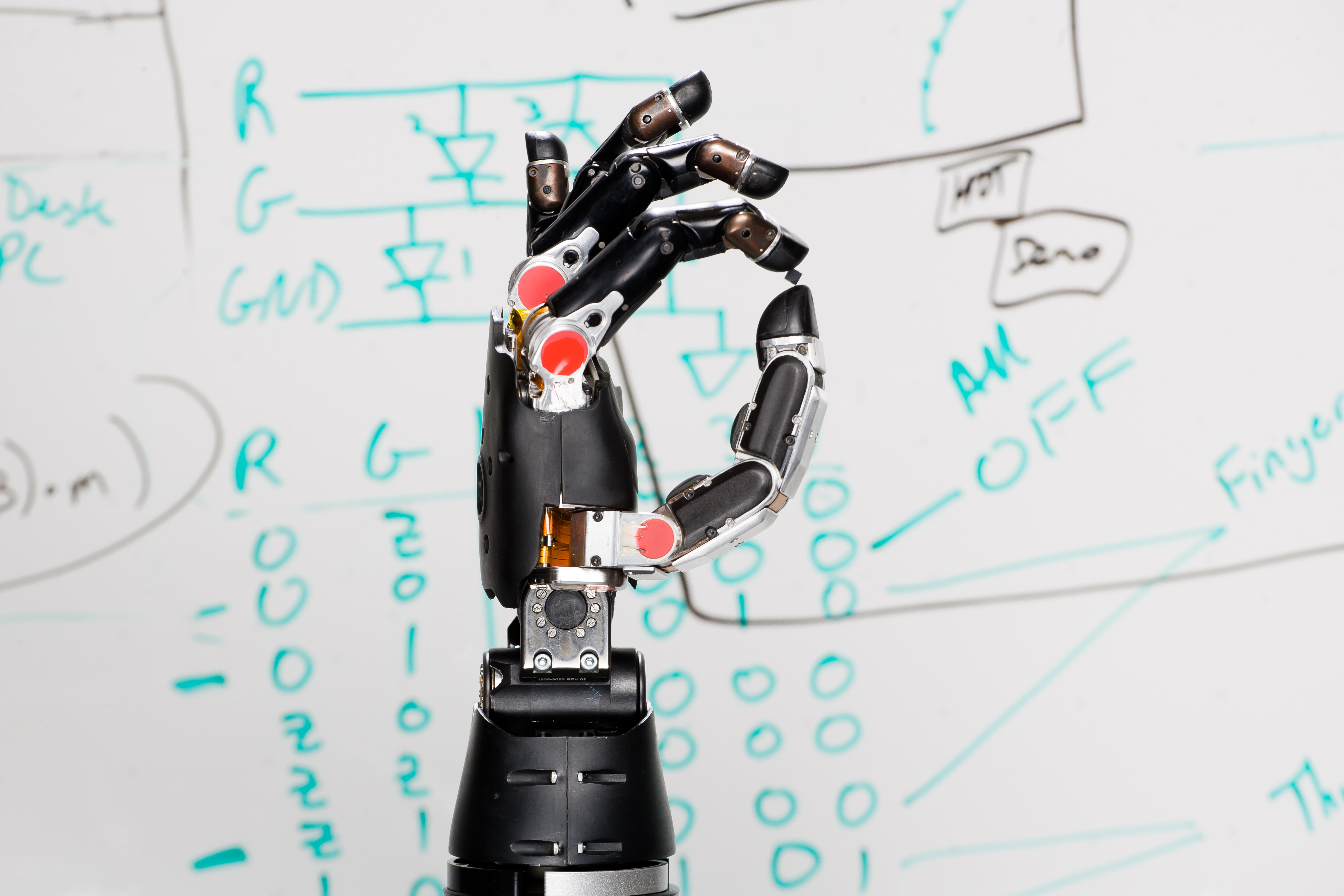
Health & Medicine
Moving with the power of thought

From telepathy to hands-free fighter jets; we are on the precipice of a new generation of technologies, powered by thought-control
Published 9 February 2016
Imagine you could manipulate the movement of a robot, or any type of machine, just by thought alone. It sounds like science fiction, but this technology is already being prototyped.
The implications are immense. From thought-controlled cars and jet fighters, to a form of telepathy using direct mind-to-mind communication and incredibly promising applications for medicine.
Thought-powered exoskeletons and brain implants that can predict seizures or detect chemical and electrical changes are just the beginning.

University of Melbourne and Royal Melbourne Hospital neurologist Dr Tom Oxley and Vascular Bionics Laboratory biomedical engineer Dr Nick Opie have developed a brain-machine interface to manipulate control and movement of robots by the use of thought alone, in collaboration with engineers and surgeons from 16 academic departments at the University of Melbourne.
The technology is essentially a tiny biocompatible implant that sits in a blood vessel next to the brain. It records electrical activity from the motor cortex, the part of the brain that commands our movements. The ultimate aim will be for these signals to ‘speak to’ an exoskeleton, returning mobility to people who have lost the use of their limbs.
The technology is in its infancy. But one thing is certain: as we move from the information era to the robotic era, it will profoundly change the way we live our lives.
Telepathy may come sooner than we thought
Dr Tom Oxley says it’s not unfeasible this type of technology will enable what is essentially telepathy.

“If you consider how we use smartphones, it’s incredible that we communicate silently to each other without talking. Now imagine if that little device was inside your brain and you didn’t have to use your hands to type out the letters of the text message. Suddenly what you’re achieving is considered telepathy.
“Direct brain-to-brain telecommunication is not unfeasible 30 years from now. These devices will enable us to achieve electronic capabilities that we can’t really imagine now.”
Brain-machine interfacing is an exciting new field of medicine
Modern medicine is starting to move away from solely the treatment of disease, to the recovery of function. Enabling movement for someone with paralysis could be the beginning. The next step is to return movement via direct brain interfacing.

Health & Medicine
Moving with the power of thought
Dr Oxley’s research team say their ‘stentrode’ technology could hold potential beyond recording, and be used to treat Parkinson’s, obsessive compulsive disorder and depression, because it offers a safer mechanism of delivering stimulation into deep structures in the brain via blood vessels.
“That’s something we are working towards and that we’d love to make a reality,” Dr Oxley says.
“This even has the capacity to warn a patient with epilepsy of an impending seizure. That would be a life-changing tool.”
The military sees the value of implantable technology
The Defense Advanced Research Projects Agency (DARPA) funded Dr Oxley’s work, primarily to offer hope to returned soldiers who have been paralysed in the field so they can eventually have movement again.
Indeed, much of our modern day-to-day technology has its foundations in US defence funding.
The internet, mobile phones, smart vehicle technology, GPS and modern robotics all have their genesis in the military and have become intrinsic to our lives.
Currently, DARPA is involved in mind-boggling research projects from developing hybrid nature-machine remote-controlled insects, to a walking humanoid robot that can use tools, drive a car and open doors.

“The first stage to this project was to develop robotic limbs,” Dr Oxley says. “The second was to develop brain control of limbs. Their goal is to repatriate soldiers who have sustained loss of limb injuries.
“The idea is to help the soldiers rehabilitate, learn how to use robotic limbs, and get back to duty if that’s what they want.”
From a bionic spine to next-gen fighter jets
Beyond usefulness in medicine, the ability for a device to transmit electrical signals from the motor system could change everything.
One possible use is vehicle control. Plugging the brain directly into a vehicle effectively removes the time delay and human error involved in using the muscles and bones required to control a joystick.
“The military appear interested in the potential for jet fighters to control their planes with direct thought control, rather than using their arms. The reaction time you’d shave off would be milliseconds,” Dr Oxley says.

Dr Regina Crameri is Associate Director of the Defence Science Institute in Melbourne.
“Pilots are in a very complex environment when flying planes. Having this device could reduce their cognitive load while they’re flying, therefore making it simpler for them and less stressful,” she says.
This is a prime example of ‘dual use technology’, a military term for technology that has a military use, as well as civilian and medicinal use.
“What really impressed me about the ethos of military funding is they are not limited by feasibility,” Dr Oxley says. “They encourage blue-sky, innovative, radical, paradigm-shifting research, that would never be funded by traditional programs.”
Banner image: Shutterstock